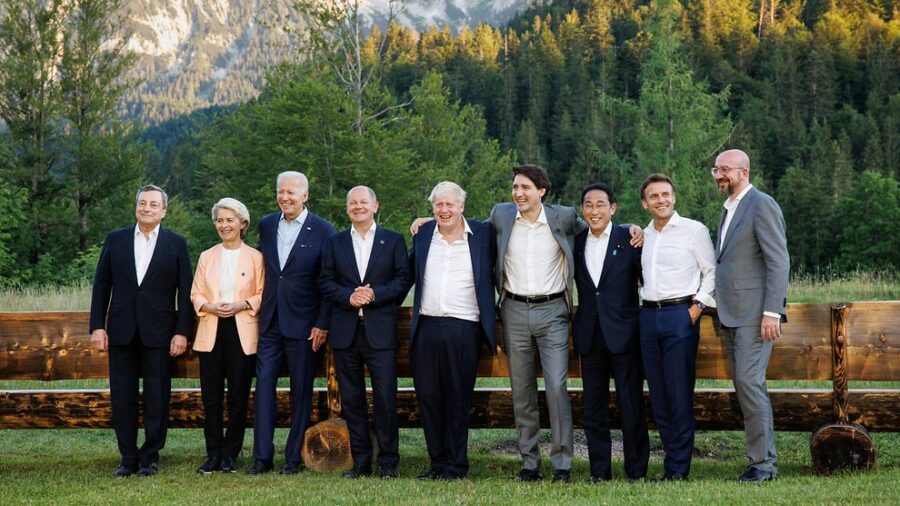G7 leaders have laid out detailed plans to secure $600 billion in financing for the developing world, in a move seen as opposing China’s Belt and Road initiative.
The Partnership for Global Infrastructure and Investment (PGII) is relaunching a plan unveiled at last year’s G7 talks in Britain. The group includes the US, Canada, France, Germany, Italy, Japan and the UK.
China’s multi-trillion-dollar infrastructure initiative has been criticized for potentially burdening countries with a lot of debt.
And according to what US President Joe Biden announced during the G7 meeting held in southern Germany, the plan will bring returns to all. “I want to be clear. This is not an aid or a handout. It is an investment that will bring returns for everyone,” he said.
Biden added that the plan would allow countries to “see the tangible benefits of partnering with democracies.”
“With partners in the G7, we seek to raise $600 billion by 2027 for global investment in infrastructure,” the White House said before a speech by Biden during which he revealed this proposal.
The plan calls for G7 leaders to raise $600 billion over five years to fund the launch of infrastructure projects in middle- and low-income countries.
The US promised to raise $200 billion of the total through grants, federal funds, and private investments. Meanwhile, the EU announced another 300 billion euros to be secured.
The initiative will be directed towards tackling climate change, improving global health, achieving gender equality, and building digital infrastructure.
Projects that can be financed via the initiative
Some of the initiatives highlighted include a solar-powered project in Angola, a vaccine manufacturing facility in Senegal, and a 1,609-kilometre undersea communications cable connecting Singapore to France via Egypt and the Horn of Africa.
The plan was presented as a way to counter China’s ambitious Belt and Road Initiative, launched by Chinese President Xi Jinping in 2013, which provides financing for emerging countries to build infrastructure such as ports, roads and bridges.
The Chinese plan has been criticized as a way to provide “greedy loans”, forcing heavily indebted countries to give up major assets if they fail to repay their debts.
The infrastructure plan was first unveiled at the G7 summit in 2021 in Britain. But this US-led plan, called Building a Better World, faltered at the time due to lack of progress, and the project was renamed Partnership for Global Infrastructure and Investment (PGII) before being revived at the 2022 summit.
European Commission President Ursula von der Leyen said the aim of the latest project was to provide a “strong positive investment drive to the world to show our partners in the developing world that they have a choice”.








